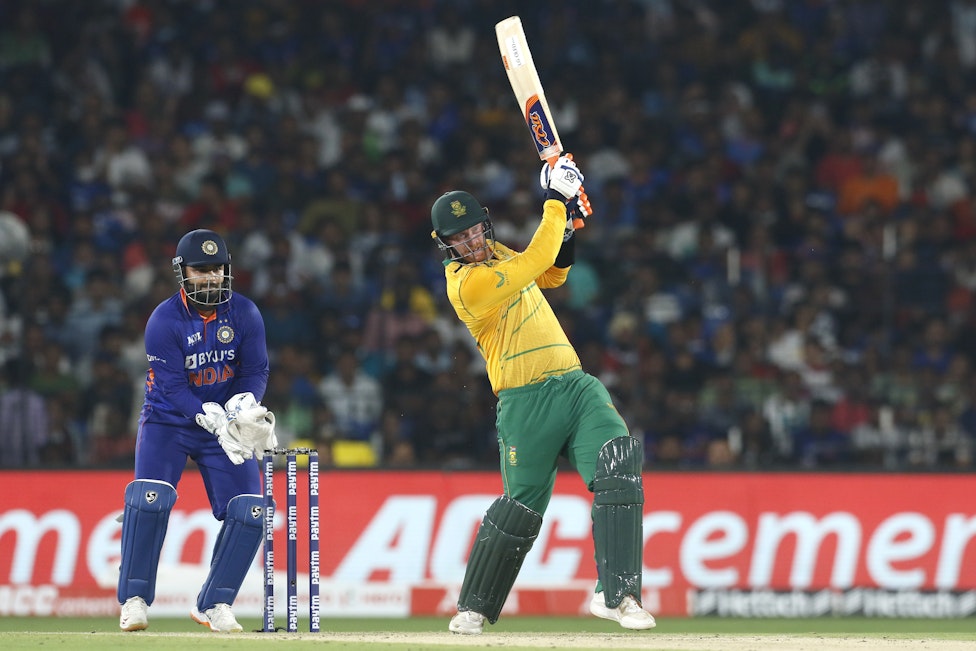 OPINION
OPINIONBack in the 2016 edition of the Indian Premier League (IPL), the Suresh Raina-led Gujarat Lions side were unlucky enough to run into world class, all-time-great T20 knocks in consecutive matches. Having topped the table in the group stages, the Lions were at the receiving end of an AB de Villiers special in Qualifier 1. Then in Qualifier 2, they witnessed David Warner play arguably the best T20 knock of his career.
Rishabh Pant was an 18-year-old when Gujarat were the hapless victims of two once-in-a-lifetime individual performances, but you suspect that he now exactly knows what Raina went through six years ago.
On Thursday at the Arun Jaitley Stadium in Delhi, he saw the Proteas pull off their highest ever T20I chase, the Indian attack being gunned down by a rampant David Miller.
Tonight at the Barabati Stadium in Cuttack, the wicket-keeper, who is also team India’s stand-in captain, watched Heinrich Klaasen do a Warner and play the best knock of his career to give South Africa a 2-0 lead in the series.
Captaincy is supposed to be a tough job but spare a thought for poor Rishabh Pant. Two games as skipper and he’s been at the receiving end of arguably the #1 and #2 T20I knocks of the year.
Miller’s knock in Delhi was special owing to its sheer absurdity. The Proteas needed 126 off the final 10 overs to win and the southpaw ended up making it look like a walk in the park; the visitors got home with five balls to spare.
Klaasen did not walk into an impossible situation like Miller, nor was he tasked with chasing a mammoth total. Yet his was a knock every bit as good as Miller’s. You could even argue that it, if anything, was better.
Why it is okay to make that claim is because, on the night, Klaasen batted like Miller did in Delhi, except on a Cuttack wicket that was tailor-made for batters to fail. The amount of variable bounce on the wicket was laughable, the ball was stopping and jumping and the pitch, overall, was dead slow. Prior to his arrival, 12 batters across two sides had amassed 170 off 153 balls at a strike rate of 111.1.
Klaasen walked in at 29/3 at the end of the powerplay and casually wrecked the Indian bowlers, making every other batter look like a noob. Not only did he strike at 176.09 (easily the highest among all batters on the night), he batted with a control percentage of 84.8% and played false shots to only 15.2% of the balls he faced.
To put these figures into context, no other batter in the game (min 20 balls) had a control percentage of over 77%, and all batters who faced 10 or more balls had a false shot percentage of over 20%.
Let’s just say this: it shouldn’t have been possible for Klaasen to do what he did on Sunday. Which is why it was such a special knock, and which is why both Pant and India can consider themselves unlucky for the second game running.
That being said, as much as India were unlucky to end up on the losing side on Sunday, the game was not stolen from them like it was in Delhi. Here, for large parts, they simply were not up to the mark.
With the bat, they lost the plot in the middle-overs as they scored at a rate of 6.9 and lost 4 wickets. Dinesh Karthik (30*) managed to slightly salvage things in the final two overs, but 148 was never going to be an outright winning total, even on this Cuttack wicket.
Pant knew it. “We were 10-15 runs short,” he said post-match.
It is hard not to look at Shreyas Iyer’s innings and wonder that he should have fared much better.
For one, Iyer was guilty of not converting the start he got into a big score, perishing after facing 35 balls. And for the second game running, the right-hander struggled immeasurably against pace, scoring just 19 off the 25 balls he faced against the quicker bowlers. As much as he tried his best to make up for it by being ultra-aggressive against the spinners — Iyer scored 21 off 10 balls versus spin — the 27-year-old’s struggles against the quicks impacted the innings negatively.
With the ball, meanwhile, the spinners provided neither cutting edge nor control. Bhuvneshwar Kumar, through his new-ball burst, set up the game for the rest of the bowlers, but he was let down big time by the pairing of Yuzvendra Chahal and Axar Patel, who between them conceded 68 runs off 5 overs. In particular, they were taken to the cleaners by Klaasen, who scored 48 off the 18 balls he faced against the two spinners.
The hosts began the series banking a fair bit on their slower bowlers, but across the first two matches, the 69 balls bowled by the Indian spinners have traveled for 136 runs. Their no-show, coupled with Hardik Pandya underperforming with the ball (0/49 off 4 so far in the series), has hurt the side big time.
And so when team India take the field for third T20I, on Tuesday, they will be doing so knowing that a defeat will put an end to their three-year unbeaten streak in bilateral T20Is at home. Since the start of 2017, Australia are the only team to have won a bilateral T20I series in India, but 2-0 up already, Temba Bavuma will be confident of putting his name alongside Aaron Finch.
After a performance like the one tonight, why wouldn’t he be?